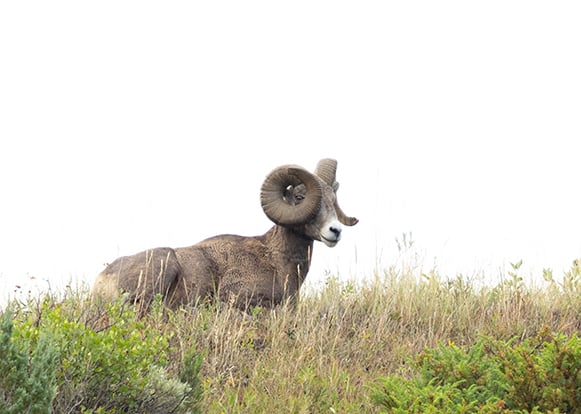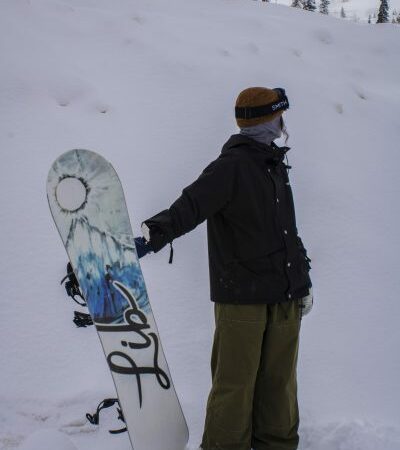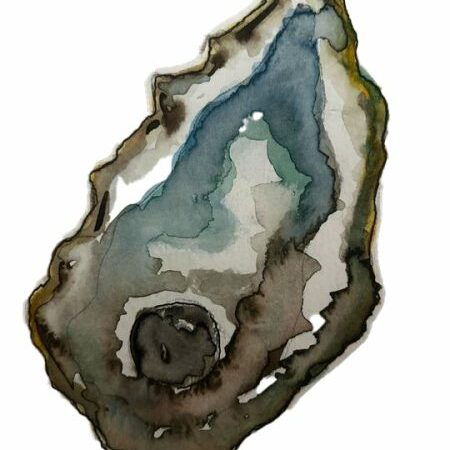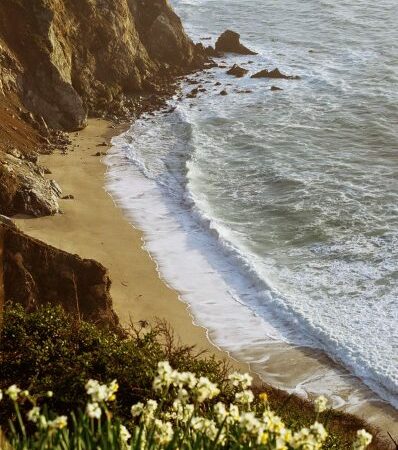Little Cottonwood Rock: Genesis
What comes to mind when you think of Little Cottonwood Canyon?
You might think of the beautiful hikes. You might think of the best powder day of your life. Or how the Canyon seems to go ablaze as the leaves change color in the fall. You might hate the Canyon. You might think of an experience that changed your life. Or might simply think of home. I—and I’m sure many others—think of the climbing. From bouldering to multi-pitch trad, Little Cottonwood has a lot to offer in the rock department.
Behind almost any experience you could think of in the Canyon is one common denominator. The rock.
The welcoming arms of the Canyon, the rocks are the first thing you see when you enter and the last thing you see when you leave. For those early on the road, they are huge stone slabs rising toward the sky on either side of the Canyon. The occasional boulder that can be seen from the pavement. For those who venture deeper into the Canyon—perhaps off the road and onto the trails—the rocks become mountains. They become a challenge, no matter what level of experience you might have. Pfeifferhorn, White Baldy, Superior. These names are well known.
For others, the rock becomes something more intimate. They explore the intricacies that are invisible to those who enjoy from a distance. With this new perspective they discover the splitter cracks and thin edges that allow these monoliths to be climbed. To some it becomes a wall to be conquered. To others it becomes a living thing. Something to dance with. From the Goshutes to the early Mormon pioneers to modern day climbers, people have been exploring the rock of Little Cottonwood Canyon for thousands of years. Over the next few months, I hope to chronicle the history of this camp of people, these climbers. Some are conquerors, some are dancers, but all find something in the rock—and the Canyon, as a whole—that affects them deeply, if given enough time. Something that inspires them to join the ranks of those legendary climbers that came before. This is the story of rock climbing in Little Cottonwood Canyon.
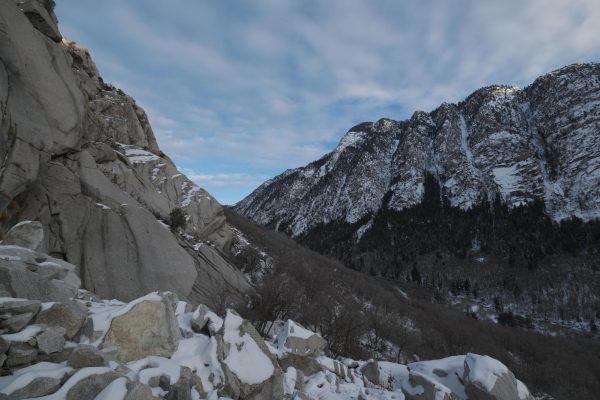
GENESIS
To know the history of climbing in Little Cottonwood Canyon, we must first know the history of Little Cottonwood Canyon. This requires us to travel back in time, way back to the Pleistocene epoch, the most recent ice age. Between 15,000 and 25,000 years ago, ice accumulated in cirques at what is now the back of the Canyon. Ever so slowly, this accumulation gave rise to a massive glacier. As it grew, its weight caused it to flow downhill, westward, towards the prehistoric Lake Bonneville. Ice pushed against rock. Boulders joined the glacier in its war path, later deposited throughout the mouth of the Canyon. Through this crucible of snow, ice, water, and stone, Little Cottonwood Canyon was carved. The melting of this glacier revealed a vast, U-shaped chasm, the product of thousands of years of effort.
Though it was not the Little Cottonwood Canyon as we know it today, of course. There were no roads, parking lots, ski resorts, houses, or any sign of human life at all (hard for some of us to believe, I know). There were likely no trees or wildlife quite yet, either. And it would take time for the mountains to reach the heights they are today. Indeed, it took thousands of years more for Little Cottonwood Canyon to become something that resembles it in the modern day.
It is during this time, after the glacier had done its work, that the characteristics of the rock—the things that make the climbing so good—took shape. The rock itself is, of course, far older than the Canyon. The Little Cottonwood stock dates back 29 to 30 million years, to the Oligocene epoch. It is composed mostly of granite, granodiorite, and quartz monzonite. That is to say, it’s rough and sharp.
It is in small weaknesses in the intrusion spanning the mouth of the canyon that the beautiful cracks we climb on (or in) today were formed. As rain collected in small fractures and divots, it would freeze. This put pressure on the crack in which the ice had formed, expanding it. While each individual instance of this was negligible, cracks became wider and more defined over years and years of these occurrences. This is the main means of change that occurred on the immovable cliffs on which many of the trad routes in the Canyon—the Pentapitches, Bongeaters, and Dorsal Fins of the Canyon—are located. Boulders, however, go through an extra step before they can be so minutely shaped.
Some of the boulders we climb on today—the Copperheads, Wrist Rockets, and Tiger Stripes of the Canyon—seem to have been perfectly placed by giants, or some unknown god. They were, in actuality, deposited by the glacier that gave form to the canyon itself, left behind after it melted as we exited the last ice age. In a way, they were placed by a giant. Others—the Euros, Nest Eggs, and Neolithics of the Canyon—lie in fields of talus, products of violent rock slides that took place an untold number of years ago. The edges and cracks on these boulders may have already been a part of them before they found their final resting place. If not, they were likely formed in a fashion similar to those found on their much larger kin, the cliffs.
It is a combination of this critical time and the millions of years that came before that the features of the rock were mutated into what they are known for today. Sharp crimps, thin cracks, rough slopes, small, nearly invisible footholds. Those blank, featureless faces that can be so frustrating. It is these characteristics that inform the precise, technical style of climbing that Little Cottonwood is know for. These are what make it such a unique destination.
It is impossible to talk about the origin of the routes we climb without mentioning the role of human manufacturing. This has been a point of discourse within the climbing community for years, so be patient with me as I attempt to speak on it briefly.
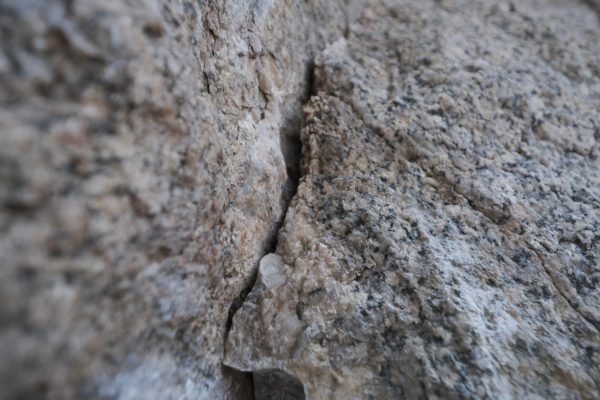
It is a simple fact that it takes some level of human alteration in order to make something easily accessible or, in some cases, even climbable. Generally, this takes the form of less intrusive activities. In bouldering this may mean arranging landings, brushing off crumbly rock, and, in some cases, digging out rocks from under a boulder to find a lower start. In trad climbing this typically means using removable pieces of protection to clip into. These activities, while having an effect on the rock and surrounding landscape, are not malicious and usually do not fundamentally change the rock.
There are other forms of human activity that are more intrusive, however. This might include chipping or gluing holds, drilling anchors and bolts, or hammering pitons into cracks (this one is far more outdated, but its effects can still be seen today). In some cases, these are necessary. In others, they are completely unwarranted and unwanted. Either way, it is a fact that we have had an effect on the rock we climb on, and this should be included in its history.
Over thousands of years of constant, sometimes violent, change, Little Cottonwood Canyon, as we know and love it today, was formed. Through even more constant and minuscule change, the rock was molded, becoming the subject of so many of our passions—climbing being the one I have chosen to dedicate a large portion of my life to. As a result of both natural and artificial processes, Little Cottonwood became a climbing mecca of the United States. Today it attracts well known climbers from across the country, even more so in recent years as USA Climbing has chosen Salt Lake City as its base-of-operations.
But there is more to the story.
Little Cottonwood Canyon did not form over thousands years and then become a dream climbing destination overnight. It has taken years of development and exploration from many dedicated dirtbags to become known as what it is today. If you can bear to stay with me for the next few months, I hope to shed light on some of these stories and create a brief history of climbing in Little Cottonwood Canyon. A history of Little Cottonwood rock.
The post Little Cottonwood Rock: Genesis appeared first on Wasatch Magazine.
Source: https://wasatchmag.com/little-cottonwood-rock-genesis/
